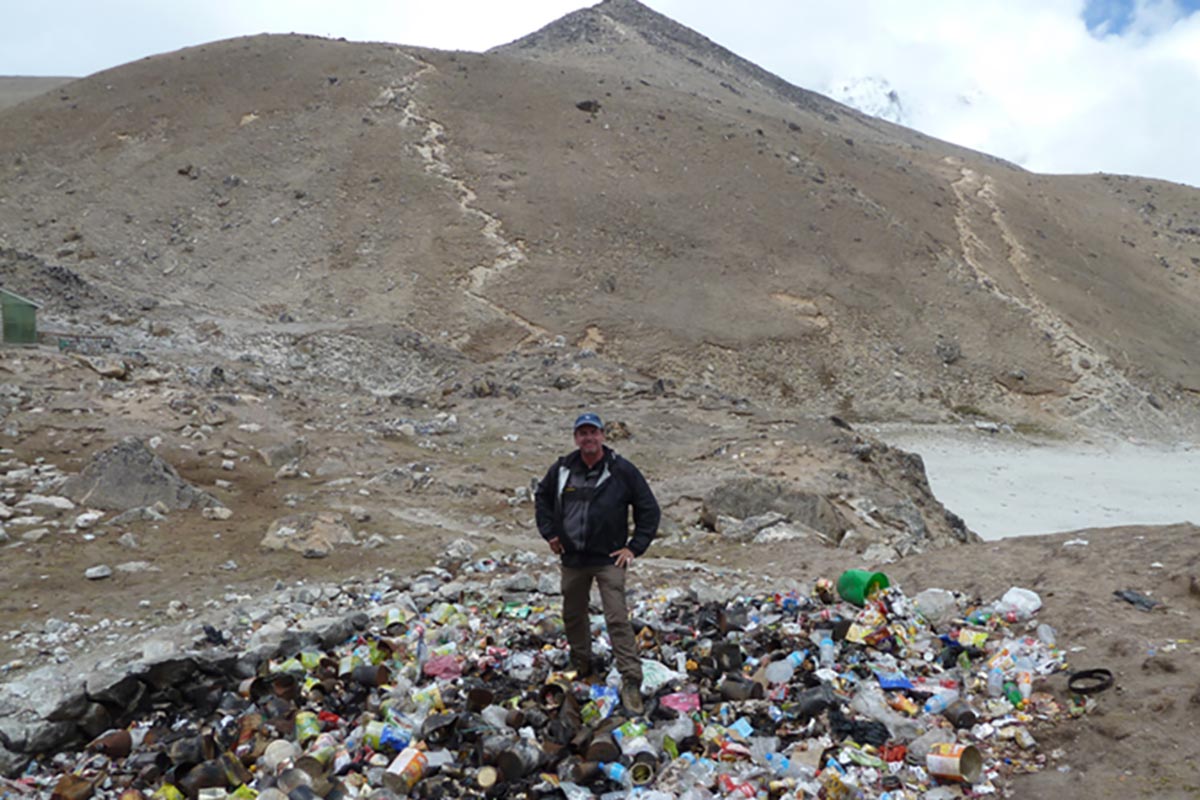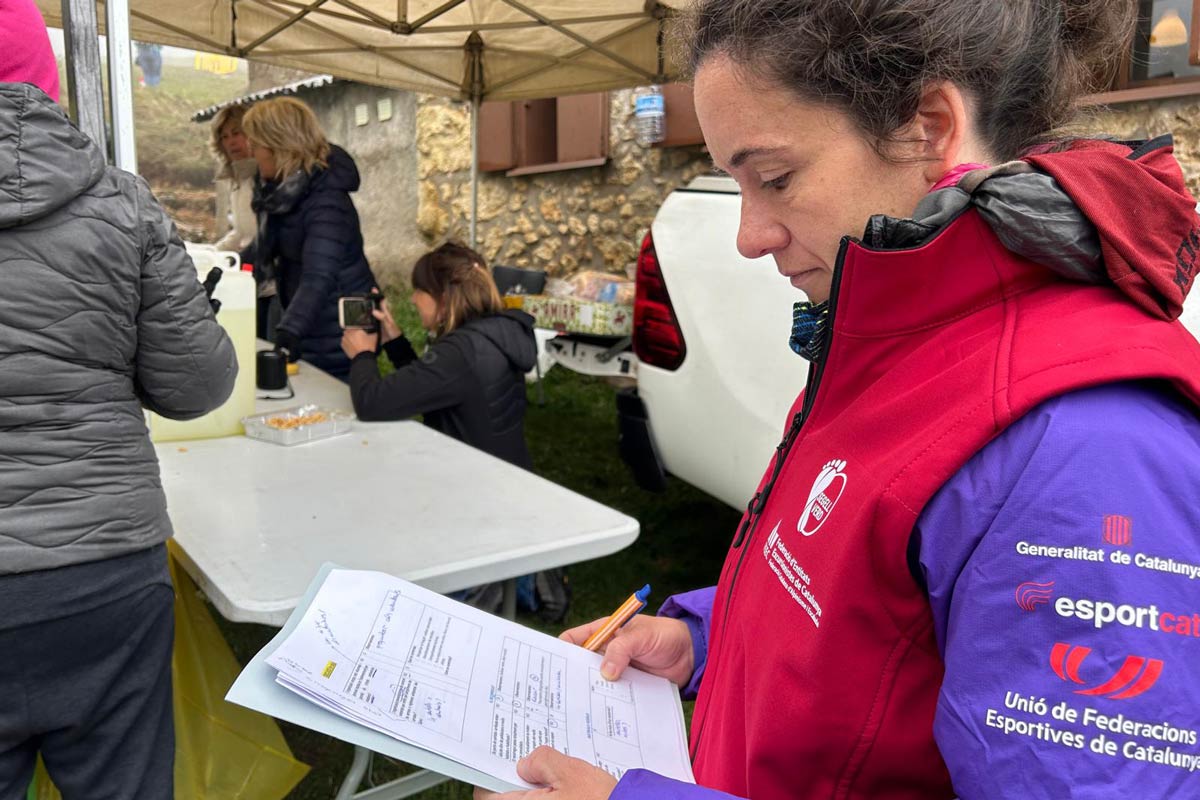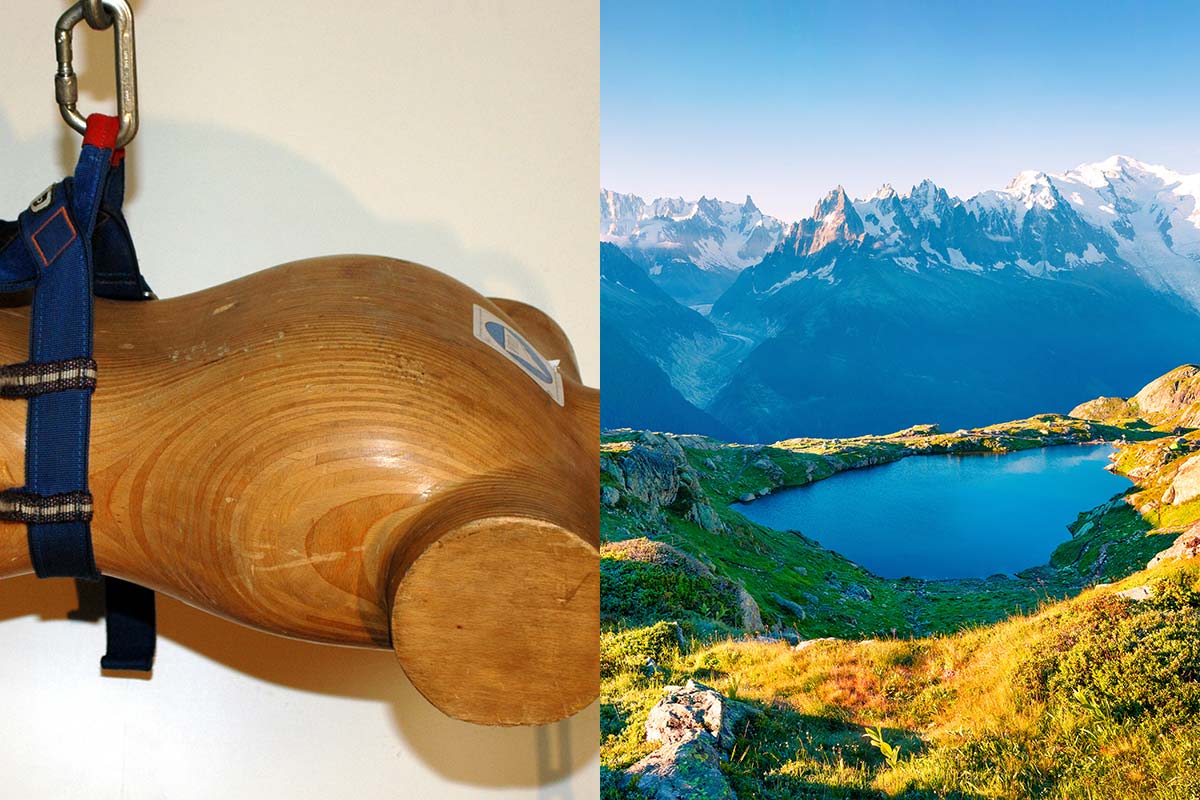
NOMINEE PROFILE
MOUNTAINEERING FOCUS
The accumulation of solid waste in the world’s high mountain basecamps and high camps has been a chronic problem facing alpine ecosystems since mountaineering first became popular in the 1850s. The problem has further intensified with the steady acceleration of trekking and mountaineering tourism over the past four decades, and has become particularly acute in the Sagarmatha (Mt Everest) National Park and Buffer Zone (SNPBZ) region of Nepal. But while the issue of garbage in the Everest basecamp and upon the mountain itself has made headlines for decades, little attention has been paid to the growing problem of unsightly and toxic landfills in the vicinity of villages along the trekking routes.
In response, we propose to conduct an interdisciplinary study in the region to identify the key challenges, analyse their drivers, and develop collaborative solid waste governance involving the major stakeholders. The study will fill existing gaps in our understanding of current waste management practices while developing locally responsive collaborative management plans that consider a range of viable options, including recycling, the banning of plastic water bottles, and establishing recycling facilities both within and outside park boundaries. This will be a hands-on, action-oriented approach to resolving the current and growing solid waste problem in the Mt. Everest region that will have applications to other adventure tourism destinations throughout the mountain world.
BEST PRACTICES IN MOUNTAINEERING AND
MOUNTAIN-BASED SPORTS
The issue of garbage in the Everest basecamp and upon the mountain itself has made headlines for decades, and has recently experienced resurgence in popular international attention (see: https://www.livescience.com/63061-how-much-trash-mount-everest.html).
However, rarely are concrete, sustainable solutions to solid waste management within the region’s villages and main trekking routes discussed or implemented. As tourist numbers continue to rise in the SNPBZ (now more than 50,000 per year, not counting support staff), unsightly and unhealthy landfills have become a common sight within a few minutes’ walk from most villages and lodges, and buried landfills are easily identified by their sunken appearance. The garbage is composed primarily of tin/steel/aluminium cans, glass bottles, plastic bottles, and other plastic goods. Local lodge owners and waste management organizations refer to these deposits as “burnable garbage,” a title that suggests that once burned, the problem is solved. Nothing, however, could be further from the truth, especially at the high altitudes and cold conditions of the Khumbu where such solid waste can take hundreds of years to break down, while the landfills remain a perpetual source of contamination. Until now, major enforcement of solid waste regulations has been in the form of a “command and control” approach. The Government of Nepal, for example, instituted a $4,000.00 garbage disposal deposit for climbing expeditions, which may forfeit the deposit if they fail to return without at least eight kilograms of trash and human waste.
While this has reduced solid waste accumulations to a certain extent in the Everest basecamp, it is not considered to have been particularly effective elsewhere. On the other hand, our proposed partnerships with international organizations, especially international alpine clubs, the outdoor retail industry, and professional trekking and climbing companies, will bring the waste management issue into the global conversation, while identifying potential funding pathways that will be essential for long term project sustainability. Focus group discussions with local tourism businesses surrounding waste management strategies will also help identify areas for capacity building, while encouraging buy-in of organizations in the region.
OPPORTUNITIES FOR VOLUNTEERS
The ultimate outcome of the proposed project is to develop a collaborative management plan that brings together all three of the primary sectors involved: the private sector (e.g., lodges, trekking agencies, contractors); the public sector (e.g., Sagarmatha National Park and Buffer Zone (SNPBZ), Nepal Mountaineering Association (NMA), rural municipalities, district administration, police); and community-based programs (e.g., Sagarmatha Pollution Control Committee (SPCC), buffer zone committees, village pollution control committees) in governing solid waste management.
The private sector can play an effective role in the development of an entrepreneurship for the collection, separation, and monitoring of recycled materials, building trust among stakeholders that encourages and allows them to participate in a collaborative governance system. The role of the public sector (e.g., the Department of National Parks and Wildlife Conservation (DNPWC), rural municipalities, buffer zone committees, Nepal Mountaineering Association (NMA), and others) will be to facilitate and regulate the existing policies while providing support to the overall system. The role of community organizations will be to develop local strategies, execute policies, and provide the services that are covered by the private sectors. Collectively, all stakeholders will be synergistically involved in a sustainable waste management system in ways that have never before seen in the Mt. Everest region.
RELATIONSHIP WITH LOCAL COMMUNITIES
Our proposed project will focus on the entire SNPBZ as a system of several nodes (i.e., major towns and villages) connected through the network of trails and other infrastructures critical to the booming tourism industry. Its main premise is that any initiative to address solid waste issues in this region will have to be closely tied to local communities and the tourism industry—the primary source of income for local economies since the 1990s as well as the driver for the importation, but rarely exportation or recycling, of solid waste. The system approach proposed here also provides the means for different stakeholders to participate in the system and to help develop a “collaborative governance” framework of sustainable solid waste management. Collaborative governance as used here is defined as utilizing and maximizing the strengths of three critical sectors in the Khumbu region: (1) government or public agencies, (2) the private sector, and (3) community-based organizations. The framework ensures that all three sectors communicate with each other and collaborate to achieve more than any one sector could achieve on its own.
COLLABORATION WITH LOCAL AUTHORITIES
We anticipate that the results of this study will facilitate the development of a collaborative governance framework that involves all major stakeholders, such as the officials and representatives of the SNPBZ, the Sagarmatha Pollution Control Committee (SPCC), Khumbu Alpine Conservation Committee (KACC), the Sagarmatha Next project, trekking associations, lodge-owners associations, religious leaders, and schools. Until now, the role of the private sector has been anything but prominent and powerful. The current system is very much based on what experts call the “command-and-control” approach, which is a form of regulation that depends on government laws and agencies to enforce rules (e.g., pollution deposit for mountaineering, bringing back specified amounts of trash from an expedition).
Authorized waste management agencies such as the SPCC have relied heavily on this regulatory approach for years to enforce the existing rules, rather than encourage the active participation of the private sector in waste management practices such as recycling, reducing, reusing, reorganizing, and repairing.
GOALS AND OBJECTIVES
Goal:
Conduct an interdisciplinary study in the region to identify the key challenges, analyse their drivers, and develop collaborative solid waste governance involving the major stakeholders.
Objectives:
1. Map the major landfills, their connectivity, and flow of major solid waste categories.
2. Develop a collaborative governance framework of solid waste management that is participatory, responsive, and robust.
3. Analyse and test the types and feasibilities of technologies and or policies available to determine which would be most appropriate for the different types of solid waste in the region (e.g., anaerobic digesters vs. composting, incineration, recycling, and the banning of certain containers, such as plastic water bottles, etc.), and
4. Mobilize the international adventure tourism community (e.g., alpine clubs, outdoor retail industry, trekking and climbing agencies) to become active participants in the sustainable management of solid waste within the world’s high mountain regions.
PROJECT MANAGEMENT
• A pioneering model of high mountain remote area solid waste management will be developed, tested, and applied to the Khumbu region
• Air, water, and landscape quality will be improved within the SNP
• New sustainable waste-related jobs and businesses created
• Operating costs of lodges reduced through public-private partnerships and regional level collaboration
• A true closed-loop circular economy will be introduced to the region through the use of organic waste for compost.
Project personnel include mountain geographer Dr. Alton C. Byers (University of Colorado at Boulder); anthropologist Dr. Milan Shrestha (Arizona State University); graduate student Ian Thompson (Arizona State University); graduate student Netra Chhetri (Arizona State University); and local partner Karma Sherpa of Dingboche.
HOW WE COMMUNICATE
All progress and results will be routinely shared with the DNPWC.
Popular and peer reviewed publications regarding solid waste management in high mountain regions will be produced
• SNPBZ special publications on solid and human waste management in the Khumbu will be produced in collaboration with Sagarmatha Next and the DNPWC
• Our proposed partnerships with international organizations, especially international alpine clubs, the outdoor retail industry, and professional trekking and climbing companies, will bring the waste management issue into the global conversation while identifying potential funding pathways that will be essential for long term project sustainability.
• UIAA’s endorsement of the project will be showcased and shared with other mountaineering and adventure tourism organizations in order to expand the project’s active members.

To discover more about the UIAA Mountain Protection Award please click here.
Please note that the content published in this article is courtesy of the Award nominee. The UIAA has made minor revisions to the original submission.



